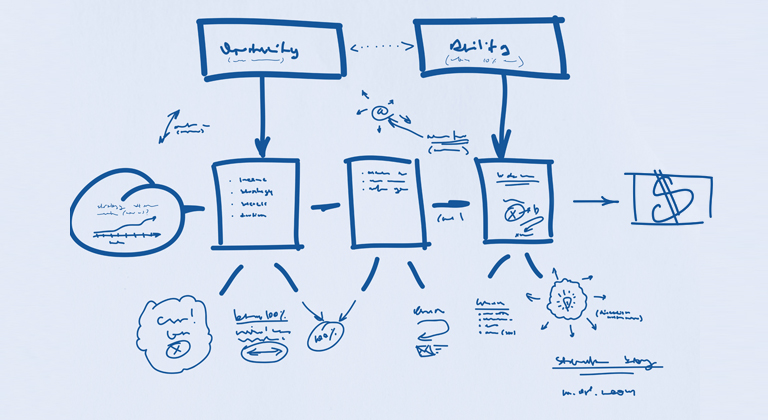Copyright and Cover Designers
Many authors believe that if you hire a designer to do your covers, you’re free to use the finished product however you see fit – including resizing, zooming in on, or cropping out parts of the images to use in your ads or other promotional material. But be careful, because in many cases, doing those things may actually be in violation of your license agreement. Just because you paid a designer for a cover or purchased some stock images doesn’t mean you’re free to use them however you please. That’s why Nate is here to go over what is and is not allowed across the various scenarios.
You’ve invested a ton of time and energy into making your story perfect, but without an eye-catching cover designed to communicate to your intended audience, you’ll be at a major disadvantage when the time comes to hopefully see some returns on your investment. So what are your options? If you don’t have the skills (or interest) to design your own covers, that means that you need to find someone who does.
Unfortunately, there are a few confusing copyright pitfalls when hiring someone to design your cover that you (and even the designer) might not be aware of. Hopefully by shedding a little light, I can help you maximize the value of your designs and uncomplicate the relationship you have with your designer.
The confusion mostly centers around who owns the copyright to the finished work and has the rights to create derivatives from it. In an uncomplicated world, the typical author-designer relationship would fall into one of two scenarios:
- The author and the designer have a work-for-hire agreement, where the designer transfers the copyright of any art assets created to the author (which can be more expensive for the author).
- The designer retains the copyright for any art created, and then the author pays (either as a package or à la carte) for the art assets and derivatives they need.
But because so many covers are produced with third-party royalty-free stock art (either provided by the author or the designer), the license agreement throws a wrench into the works. So why is that?
First let’s clarify what a royalty-free license is and what derivatives (or derivative works) are, since we’ll be talking about them a lot.
A royalty-free license basically means that one doesn’t need to pay royalties to a copyright holder for repeated uses of an image. Usually, these licenses are non-transferable, meaning that the license holder (the person who physically purchased the license) cannot sublicense or transfer the license and non-exclusive, meaning that the license is not exclusive to one individual (which is why you see so many of the same photos used on covers).
A derivative work is a work based on, derived from, or which contains elements of, one or more already existing works. For our purposes, a derivative work can be as simple as resizing an image (which creates a new version of the original), or including the original in an ad. The copyright holder has the exclusive right to create derivative works.
So how does this all work in practice and how can you be sure that you’re covering your tail end? Here are the most common scenarios:
Your Designer Licenses the Stock
A third-party owns copyright of stock images, and the designer owns copyright for any alterations and additions to stock.
- The author cannot make any derivative images, including crops, zooms, and ads with any delivered images. They can only be used as-is. The designer cannot give permission for the author to do this, either.
- The author cannot request the stock images that the designer licensed to use themselves (or through another designer).
- The author can never request ownership of the delivered files that contain stock images via a work-for-hire copyright transfer.
Why aren’t these things allowed?
The main issue is that the designer licensed (but does not own) the stock, and the license for use is non-transferable. So if you make any derivatives of the delivered work (which contains the stock art), you would be infringing on the copyright of the stock owner. The designer also can’t transfer the images to you for the same reason, or transfer ownership of the completed files—they simply can’t transfer ownership of something they don’t own.
You License the Stock
A third-party owns copyright of stock images, and the designer owns copyright of alterations and additions to stock. Because you are the designer’s client and they are acting on your behalf, they have an implied license to use any stock you provide for your designs only—the designer would not be able to use the stock you provide for another client’s work.
- The author cannot make any derivative images, including crops, zooms, and ads with any delivered images. They can only be used as-is.
- In this case, the designer can give permission for the author to make derivatives of the delivered files (for example, adding the cover image to an ad). Best to get permission in writing.
- The author can request copyright ownership of any additions or alterations to the stock art in any delivered files (but will not own the copyright for the images in their entirety). Transfer will be part of the design agreement.
Why are these things allowed or not allowed?
Because the designer owns the copyright of any of the additions or alterations made to the stock you provided, you would need permission to create further derivative copies, even though the royalty-free license of the stock allows you to do so. You can however, use the raw stock image you licensed as you see fit within the bounds of the license agreement (or provide it to another designer to make further assets).
Your Designer Shoots (or Otherwise Creates) Custom Stock
The designer owns the copyright of any delivered images and any of the components they created.
- The author cannot make any derivative images, including crops, zooms, and ads with any delivered images without permission from the designer (best in writing). They can only be used as-is.
- The author can request the stock images that the designer used to use themselves (or through another designer), and/or can request full copyright transfer of both the custom stock and finished files as part of the design agreement.
Why are these things allowed or not allowed?
Because the designer exclusively owns the copyright of the delivered image and all of the components, they have the exclusive right to make derivatives. Even simple ones, like resizing the image or cropping a portion of it. If you want to create something, cover your tail end and make sure that you get permission in writing from your designer, or include work-for-hire language in your written agreement that transfers the copyright of the finished cover files (and any components) to you.
You Shoot (or Otherwise Create) and Provide the Designer with Custom Stock
You own the copyright to any cover components you create and the designer owns the copyright for the additions or alterations in the delivered images.
- The author cannot make any derivative images, including crops, zooms, and ads with any delivered images without permission from the designer (best in writing). They can only be used as-is.
- The author can request full copyright transfer of the finished files as part of the design agreement.
Why are these things allowed or not allowed?
Even though you own the components of whatever art assets that your designer creates, they still own the copyright of any changes, alterations, or additions they make. They own their contribution to the final product, basically. So in order to create derivatives of any delivered files, you would need permission from the designer, or would need to include work-for-hire language in your written agreement to transfer the copyright of any changes to you. You still retain ownership of the original art you provided to the designer, of course, and can use it as you see fit (including sending it to another designer).
Conclusion
Those are the basics! There are other scenarios too, like shooting some custom stock and using some third-party stock for the same cover, but any time third-party stock is used, the rules that apply are the same as whoever licensed the stock with neither the author nor the designer being able to claim complete copyright ownership.
Hope that helps! As always, if you have any comments or questions, feel free to leave them below.












2 Comments